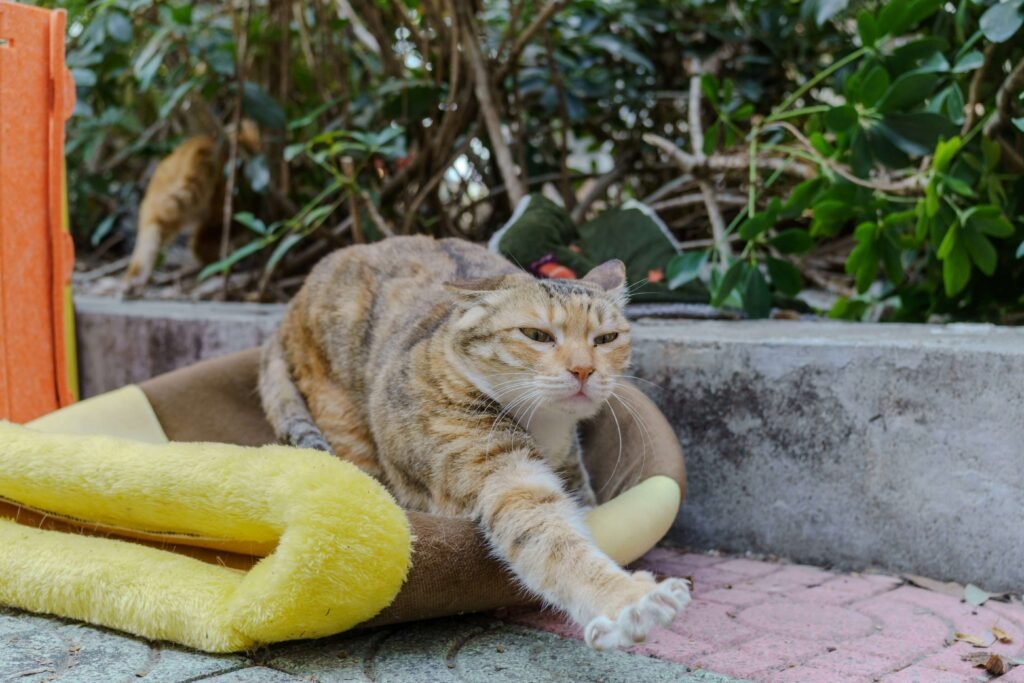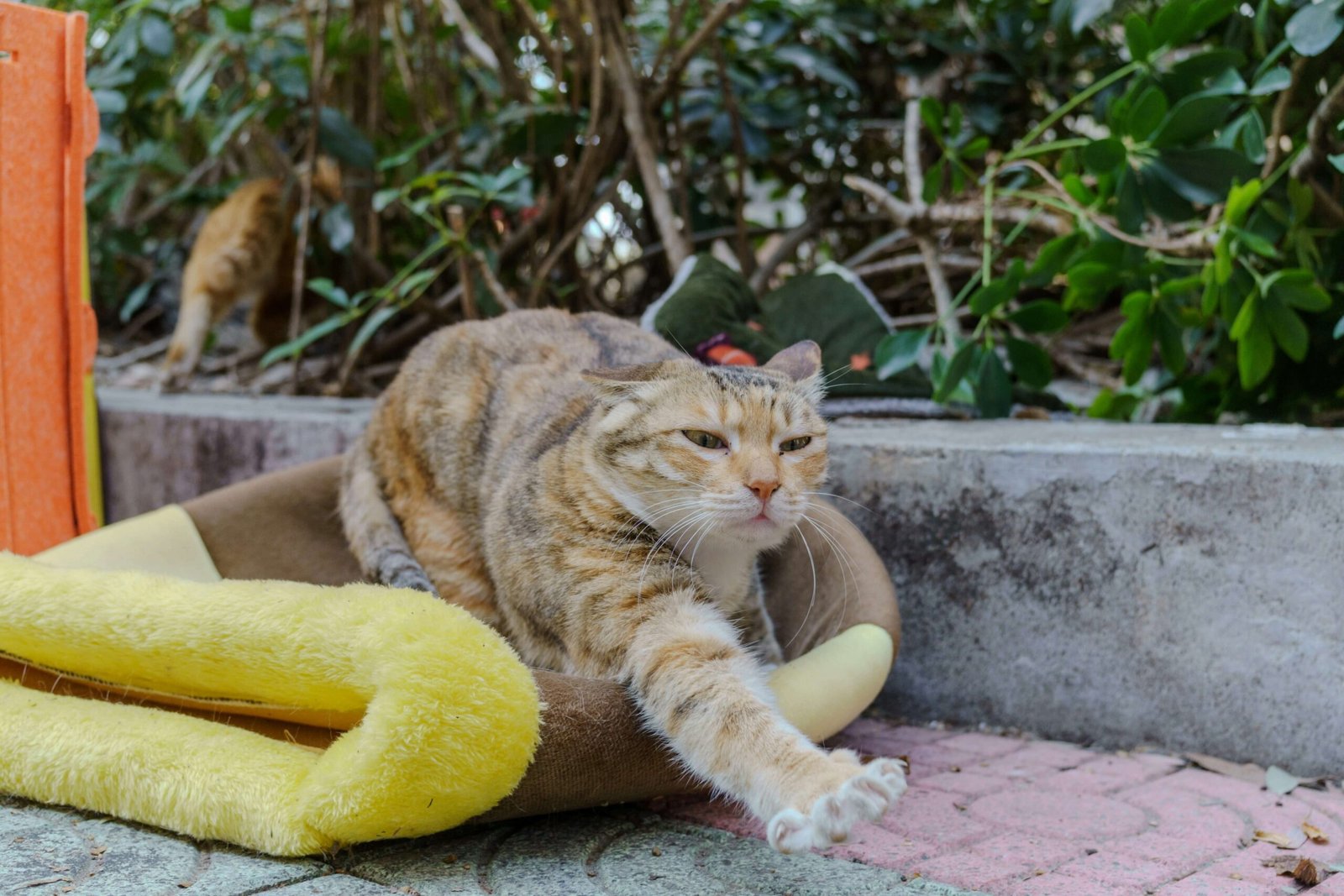Why Does My Cat Make Biscuits on Me?
If you’re a cat owner, chances are you’ve experienced the delightful yet sometimes perplexing behavior of your feline friend “making biscuits” on you. This endearing action, where cats rhythmically knead their paws against soft surfaces (including you!), is both adorable and fascinating. But why do they do it? In this blog post, we’ll dive into the reasons behind this behavior, explore its significance, and share tips for making the experience enjoyable for both you and your furry companion. Whether you’re a seasoned cat parent or new to the world of feline quirks, you’ll find plenty of insights to deepen your bond with your pet.
The Science Behind Kneading: Why Cats Make Biscuits
Cats are mysterious creatures, and their behaviors often have deep-rooted explanations tied to their biology and instincts. Here’s a breakdown of why your cat might be making biscuits on you:
Comfort and Security : Kneading is often linked to feelings of comfort and safety. Kittens knead their mother’s belly to stimulate milk flow, so the behavior may carry over into adulthood as a soothing mechanism.
Territorial Marking : Cats have scent glands in their paws, and kneading helps them mark their territory. When your cat makes biscuits on you, they’re essentially claiming you as part of their domain.
Stretching and Relaxation : Cats are natural stretchers, and kneading can be a way for them to loosen up their muscles and prepare for a cozy nap.
Nesting Instincts : Wild ancestors of domestic cats used kneading to soften grass or leaves for a comfortable resting spot. Your cat might be channeling this instinct when they knead your lap or blanket.
Bonding Behavior : When your cat kneads you, it’s a sign of trust and affection. They feel safe and connected to you, making this behavior a compliment in disguise.
Understanding these reasons can help you appreciate this quirky habit even more. Next time your cat starts making biscuits, remember—it’s their way of saying they love and trust you!
How to Respond When Your Cat Makes Biscuits
While kneading is generally harmless, there are ways to ensure both you and your cat enjoy the experience. Here’s what you need to know:
Provide Alternatives : If your cat’s claws make kneading uncomfortable, offer a soft blanket or cushion as an alternative surface. This protects your skin while still allowing them to indulge in the behavior.
Trim Their Claws : Regularly trimming your cat’s nails can minimize discomfort during kneading sessions. It also reduces the risk of accidental scratches.
Use Positive Reinforcement : Reward your cat with treats or praise when they knead gently. This encourages good behavior and strengthens your bond.
Recognize Stress Signals : Sometimes, excessive kneading can indicate anxiety or stress. If your cat seems unusually restless or kneads obsessively, consult a veterinarian for guidance.
Enjoy the Moment : Instead of discouraging kneading, embrace it as a sign of affection. Let your cat know they’re loved by petting them or speaking softly during these moments.
By responding thoughtfully, you can turn kneading into a positive experience for both of you. After all, it’s one of the many ways your cat expresses their unique personality.
Check this guide 👉Why Do Cats Blink at You? Best 7 Expert Tips!
Check this guide 👉Why Does My Cat Trill and Run Away? Best 7 Expert Tips!
Check this guide 👉Why Is My Cats Stomach Bloated and Hard? Best 7 Tips!

Reasons Cats Make Biscuits | Tips for Managing Kneading |
|---|---|
Comfort and security | Provide soft blankets or cushions |
Territorial marking | Trim your cat’s claws regularly |
Stretching and relaxation | Use positive reinforcement with treats |
Nesting instincts | Watch for signs of stress or anxiety |
Bonding behavior | Enjoy the moment and bond with your cat |
Common Misconceptions About Kneading
Despite being a common behavior, there are several misconceptions about why cats make biscuits. Let’s clear up some confusion:
It’s Not Always Aggressive : Some people mistakenly think kneading is a sign of aggression. In reality, it’s usually a gesture of affection and trust.
Not Limited to Kittens : While kittens frequently knead their mothers, adult cats continue this behavior throughout their lives. It’s not a juvenile trait but rather a lifelong habit.
Not Always Related to Hunger : Although kittens knead to stimulate milk flow, adult cats don’t necessarily associate kneading with food. It’s more about comfort and bonding.
Doesn’t Mean Your Cat is Unhappy : If your cat kneads excessively, it doesn’t always mean something is wrong. However, sudden changes in behavior should be monitored closely.
Not Exclusive to Humans : Cats may knead other animals, furniture, or bedding. It’s a versatile behavior that serves multiple purposes.
Understanding these facts can help you better interpret your cat’s actions and respond appropriately. Remember, every cat is unique, and their behaviors reflect their individual personalities.
Fun Facts About Kneading
Kneading isn’t just a random behavior—it has a rich history and interesting nuances. Check out these fun facts:
Ancient Origins : The kneading behavior dates back to wild felines who softened ground coverings before resting. Domestic cats inherited this instinct from their ancestors.
Unique Patterns : Each cat has its own kneading style, from gentle presses to vigorous movements. Pay attention to your cat’s technique—it’s part of their charm!
Linked to Purring : Many cats purr while kneading, creating a double dose of cuteness. This combination reinforces the idea that kneading is a happy, contented behavior.
Varied Surfaces : Cats aren’t picky about where they knead. From human laps to plush toys, any soft surface can become a kneading zone.
A Sign of Health : Regular kneading indicates that your cat feels safe and healthy. It’s a subtle indicator of their overall well-being.
These tidbits highlight the complexity and charm of kneading. Next time you notice your cat making biscuits, take a moment to marvel at their fascinating habits.
The Emotional Benefits of Kneading for Cats
Kneading isn’t just a physical act—it’s deeply tied to your cat’s emotional well-being. This behavior provides them with comfort and helps them process their feelings. Here are some emotional benefits of kneading:
Stress Relief : Kneading can help cats release pent-up stress or anxiety, much like how humans might fidget or pace when nervous.
Emotional Bonding : When your cat kneads you, they’re reinforcing the emotional connection they feel toward you. It’s their way of saying, “You’re my person.”
Self-Soothing Mechanism : Similar to thumb-sucking in babies, kneading serves as a self-soothing activity that calms cats during uncertain or overwhelming moments.
Expression of Joy : Cats often knead when they’re happy or content, making it a visible sign of their positive emotions.
Memory Recall : The act of kneading may evoke memories of kittenhood, providing cats with a sense of nostalgia and security.
Understanding these emotional benefits can deepen your appreciation for this quirky behavior. By recognizing kneading as a source of comfort for your cat, you can better support their mental health and happiness.
How to Create a Kneading-Friendly Environment
If your cat loves to make biscuits, there are ways to create an environment that encourages this natural behavior while keeping everyone comfortable. Consider these tips:
Soft Blankets and Cushions : Place soft blankets or cushions in your cat’s favorite spots. These provide ideal surfaces for kneading without causing discomfort to you or your furniture.
Dedicated Kneading Spaces : Designate specific areas where your cat can knead freely, such as a cozy corner with plush bedding.
Interactive Toys : Offer toys that mimic the texture of soft surfaces, giving your cat an alternative outlet for their kneading instincts.
Regular Grooming Sessions : Keeping your cat’s nails trimmed not only protects your skin but also ensures their kneading sessions remain pleasant for both of you.
Positive Association : Reward your cat with treats or praise when they knead appropriate surfaces, reinforcing good habits.
By implementing these strategies, you can foster a harmonious environment that accommodates your cat’s natural tendencies. A kneading-friendly space benefits both you and your furry friend.
Signs Your Cat is Kneading Out of Comfort vs. Stress
While kneading is typically a sign of contentment, it can sometimes indicate underlying stress or discomfort. Learning to differentiate between the two can help you address any potential issues. Here’s what to look for:
Relaxed Body Language : If your cat’s body appears loose and relaxed while kneading, it’s likely a sign of comfort and happiness.
Purring Accompaniment : Cats that purr while kneading are usually expressing joy and satisfaction, signaling that they feel safe.
Excessive Kneading : If your cat kneads obsessively or for extended periods, it could indicate anxiety or a need for reassurance.
Accompanying Vocalizations : Whining, growling, or other unusual sounds during kneading may suggest discomfort or distress.
Changes in Behavior : Sudden increases in kneading frequency or intensity could point to an underlying medical or emotional issue.
Recognizing these signs can help you determine whether your cat’s kneading is a healthy habit or a cry for attention. In cases of doubt, consulting a veterinarian is always a wise step to ensure your cat’s well-being.
Frequently Asked Questions About Cats Making Biscuits
Is it normal for my cat to knead me?
Yes, it’s completely normal! Kneading is a natural behavior that reflects comfort, trust, and affection.
Should I stop my cat from kneading?
No, kneading is a healthy behavior. However, you can redirect it to softer surfaces if it becomes uncomfortable.
Why does my cat purr while kneading?
Purring during kneading signifies happiness and contentment. It’s a sign that your cat feels safe and relaxed.
Can kneading indicate a health issue?
Generally, no. However, if your cat suddenly starts kneading excessively or seems distressed, consult a vet.
Do all cats knead?
Most cats exhibit this behavior, but the frequency and intensity vary. Some cats may knead rarely, while others do it daily.
Embrace the Quirks: Celebrating Your Cat’s Unique Personality
Cats are full of surprises, and their kneading behavior is just one example of their captivating nature. By understanding why your cat makes biscuits, you can strengthen your bond and create a harmonious environment for both of you. Whether it’s a sign of affection, a throwback to kittenhood, or simply a way to unwind, kneading is a testament to the joy and companionship cats bring into our lives. So the next time your feline friend hops onto your lap and starts kneading, smile and cherish the moment—it’s a small but meaningful reminder of the love you share.
Canned Pumpkin for Cat Diarrhea: Best 7 Expert Tips! Natural remedy to firm stools, soothe upset bellies, and support gut health safely.
Can a Cat Give You Scabies? Best 7 Expert Tips! Discover the truth about feline mites, human skin risks, and how to protect yourself—without panic.
Cat Flea vs Human Flea: Best 7 Expert Tips! Discover the truth about bites, species, and how to eliminate infestations for good.
Weird Cat Behaviors: Best 7 Expert Tips! Discover why cats do strange things—and how to understand, not punish, their instincts for a happier home.





